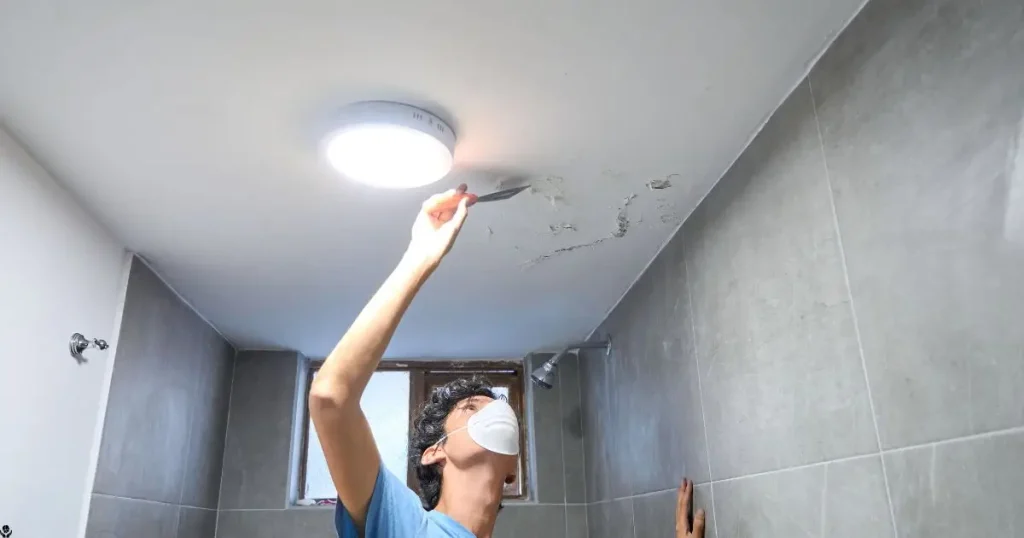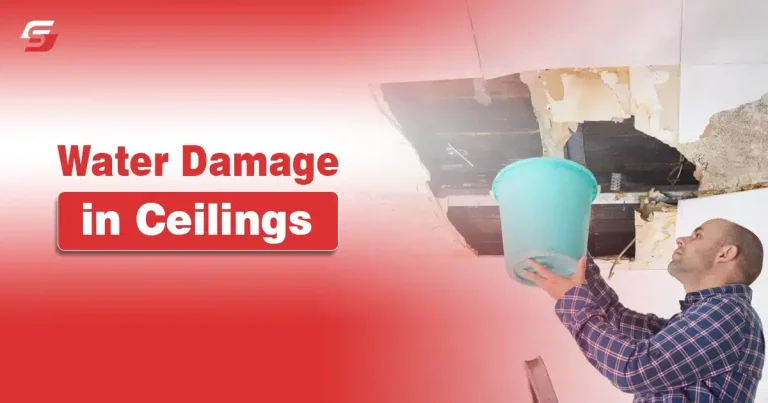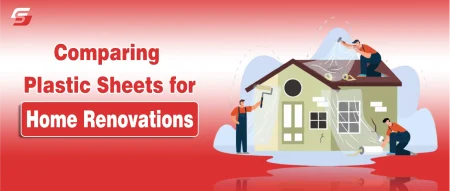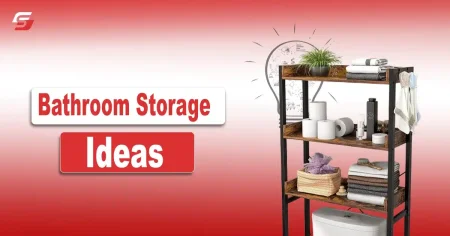Water damage in ceiling is caused by various undetected and sometimes elusive water and moisture catalytic leaks. The key to tackling the issue cost-effectively is identifying these hidden culprits. Leaky plumbing systems are one of the leading causes of water damage to your ceiling. Pipes traveling from bathrooms, kitchens, or laundry rooms can create a real danger if they leak in other places on the ceilings.
In particular, older homes may have aging plumbing systems that are more prone than newer systems to corrosion or breakdowns, causing undetected leaks. Even a tiny drip, over time, can add up and do a lot of damage to ceiling structures.
Learn about what causes water damage in ceilings.
How Water Damage Occurs?
One common cause of water damage in the ceiling is roof leaks caused by damage to shingles, clogged gutters, or insert flashing around roof elements, such as chimneys. Water can seep and drip down through the roof structure into the ceiling, causing stains, mold, and rot.
- Continuous Water Presence: Not only can visible damage be an issue, but even if there is no visible damage, the continuing presence of water can create an environment for rot and insect infestation.
- Condensation: Condensation can also be a factor, particularly in homes with temperature differentials from one part of the house to another.
- Improper Insulation: Under-insulated ductwork can bring cold air into contact with warm air, creating condensation that can drip down onto ceilings, causing water spots and potentially structural damage.
This doesn’t usually get flagged until significant damage has been done. Thus, it has become necessary for homeowners to remain watching and inspect places for signs of moist conditions or strange stains that may reveal a more serious problem.
Weathering the Storm: How Climate Can Impact Your Ceiling
The type of climate you live in is vital to how likely you are to end up with wells in your ceilings. Here is how the climate creates its impacts.
Rainy and Snowy Areas
In areas subject to heavy rains or snow, the hazards are even more significant. The added weight on the roofs is multiplied by the ease of water entering the spaces above the ceilings from imperfect roofing materials or systems.
Tropical Areas
In a tropical climate, hurricanes may unleash heavy winds and rain that swamp roof drainage systems and cause leaks. Homeowners can take proactive measures by monitoring local weather. These include rescheduling maintenance action in anticipation of predicted storms.
Temperature Changes
Another reason for water damage on ceilings can be sudden temperature fluctuations. When temperatures rise sharply or plummet, the materials that comprise your house can expand and contract. Thus, it causes cracks and crevices for water to enter.
To alleviate some of these problems, it is important to keep your home at a steady temperature and humidity. Keep track of weather predictions of possible extreme conditions. It can also help get inspections done sooner and take preventive measures to avoid damages.
Read More: Home Remodeling Tips to Avoid Overspending
In the Shadows: The Role of Poor Insulation and Ventilation
One of the common causes of water damage that is mostly overlooked is the poor insulation and ventilation that lurks inside the ceiling.
Attic Spaces
Attic spaces, in particular, need to be well insulated and ventilated to ensure that temperatures are balanced and that you preserve your attics from excessive moisture. The absence of good glass wool insulation means warmer air may migrate into the roof or ceiling void and encounter cooler air, which causes condensation to rain down on surfaces.
This event is particularly more impactful during the winter. When heated air from habitation rises, frost forms, and then disrupts as the conditions change.

Poor Ventilation
Poor ventilation in the attic can worsen these issues because moisture can become trapped in the attic. It creates damp conditions perfect for mold growth and rot. Homeowners should check their home ventilation systems to ensure the proper flow of air and the temperature is regulated.
The same breathability helps ensure that moisture cannot accumulate and cause leaking in ceilings. Which damp insulation integrity checks can easily prevent. Good quality insulation wrapped up and no air vents should be blocked can save ceilings from unseen moisture problems as well.
The Consequences of Neglect: Why Water Damage Shouldn’t Be Ignored
Cracked Ceilings
Water damage within ceilings can range from simple aesthetic concerns to extensive structural issues and should never go unnoticed. You first see stains or discoloration, which can render your house unattractive. Although these problems appear minor, they usually indicate something worse, such as leaks, mold, or structural damage.
Weakened Ceiling Frames
Wetness over time can deteriorate ceiling materials like drywall, plaster, or wood. This can result in sagging, fissures, or, in dire scenarios, complete cave-ins. The ceiling framing could weaken over time, which, in turn, can create safety problems.
For example, water loss in common areas, such as apartments or multi-family housing, can spread to adjacent spaces, resulting in expensive repairs for everyone.
Health Hazards: The Risk of Mold and Mildew Growth
Another consequence of neglected water damage in ceilings is the significant health risk posed by mold and mildew growth.
Mold Spores
Mold spores thrive in damp environments and can proliferate within 24 to 48 hours after water intrusion. Commonly found molds like black mold (Stachybotrys chartarum) can produce mycotoxins that trigger allergic reactions and respiratory issues in sensitive individuals. Persistent exposure to mold spores is linked to more serious health problems, including chronic respiratory illnesses and weakened immune systems.

Secondary Infections
Infants, the elderly, and individuals with preexisting health conditions are particularly vulnerable to the effects of mold exposure. To combat this, it’s vital to address even minor leaks promptly and to maintain a dry environment in areas exposed to moisture.
Homeowners should consider keeping humidity levels below 60%, using dehumidifiers in susceptible areas, and ensuring proper air circulation throughout the home.
Financial Fallout: The Cost of Delayed Repairs
If water damage repairs are delayed, the financial fallout can be significant as compared to that of immediate remediation or repair costs. The longer water damage lasts, the more complicated and expensive the repairs that are required can be.
Increased Expenses
Homeowners may have to replace entire ceiling portions, structural reinforcements, or even mold remediation services, which can be expensive and time-consuming. Also, if the damage is not quickly reported, it may cause issues with home insurance. As a result, lots of insurance coverage policies will outright refute the claim or not forgive the insurance claim.
Decreased Property Value
When you sell your house during periods of water damage, all the depreciated property value could significantly stress finances. It usually takes no time to make the owners realize that the property needs repairs related to water damage, and prospective buyers are always cautious about water damage.
Plus, repairing or caring for water damage can very quickly become critical. Realizing how expensive a missing water damage prevention plan is can encourage homeowners to act sooner or later to save thousands of dollars.
Aquatic Avenger: Solutions for Water-Damaged Ceilings
Homeowners can even roll up their sleeves and give some minor water damage a shot using DIY prevention methods.
DIY Solutions
Suppose the damage only covers a small area. In that case, working on the ceiling using elbow grease and supplies like joint compound, patching tape, and primer will likely be possible.
- First, determine where the water damage is coming from and fix whatever leak is causing it to prevent future growth.
- After the leak is fixed, the homeowner can take a utility knife and cut away the damaged drywall around the affected area, ensuring a clean edge to patch to.
- A drywall patch and some joint compound could make the ceiling look just like it did in the first place.
Experts Help
Suppose the damage is more significant or worse. In that case, replacing some sections of drywall, too, is also a DIY job if the homeowner has experience installing drywall. But one has to be careful of the traps around.
Homeowners who do not know about mold may neglect it behind the drywall. That fell from a ceiling due to damage or misdiagnosed structural issues.
Therefore, whenever it looks severe, or there are signs of mold. it might be best to contact several experts instead of working with the situation.
Prevention is Key: Strategies to Protect Your Ceilings
The first rule of thumb, as always, is prevention. Stop ceilings from ever getting wet in the first place. Homeowners can utilize several proactive strategies to protect their ceilings and maintain home integrity.
- The first step is to perform scheduled inspections on roofs, plumbing, gutters, etc., to detect early signs of wear and tear.
- Regularly inspecting roofs, cleaning out gutters, and keeping plumbing in working order will help lessen the frequency of water leaks before they develop into more significant and more expensive problems.
- In addition, appropriate ventilation systems in moist areas such as bathroom and kitchens limit humidity and reduce condensation to the ceilings.
- Adequate ventilation, especially in attic spaces, is also a must, helping to balance temperature differentials that can cause condensation on roofing materials.
- Also, upgrading to proper quality insulation in attics and ceilings will protect the centers possibly from water damage.
Future-Proofing Your Home: Preventing Water Damage Before It Starts
If you want to prevent water damage in the near future as well, it is necessary to future proof your home. It will enable you to avoid the destruction before it starts.
Smart Home Solutions: Tech to Monitor Moisture Levels
Smart home technology advancements provide homeowners an excellent opportunity to manage moisture levels that could lead to water damage preemptively.
- Smart Sensors: Smart sensors can be strategically placed throughout a home. They continuously monitor humidity and temperature levels. And alert homeowners through notifications sent to smartphones in case of any water damage risk.
- Smart Water Leak Detectors: Smart water leak detectors can be installed in high-risk areas, such as near appliances, plumbing, and ceilings. They alert homeowners of even the slightest moisture presence.
These home systems can help identify areas requiring maintenance or repairs. Home automation can also help manage environmental conditions, which leads to optimized indoor climate control. It ultimately reduces the chance of droplet formation, which can lead to water damage in ceilings.
Upgrade Your Roof: Choosing Materials that Resist Damage
You should invest in high-quality roofing material to increase protection from ceilings from water. It is easier nowadays to find a quality roof material with modern systems designed for life and resistance. The popular ones are metal roofing, rubber roofing, or asphalt shingles specifically treated for maximum waterproofing capabilities.
Over the years, they can significantly minimize the potential for leaks, especially in areas impacted by extreme weather occurrences.
The Importance of Regular Maintenance: Keeping an Eye on Your Ceiling
The best way to get long-lasting water damage protection is proper maintenance of ceilings and their surroundings. Homeowners should consider yearly inspections for signs of discoloration, sagging, or the presence of mold along ceilings.
Beyond that, regularly cleaning the gutters, draining away from the house, and ensuring the roof valleys are free of weeds are easy ways to protect against water damage. A proactive approach to looking after your ceiling is a massive advantage in helping prevent minor issues.
Hence, homeowners can safeguard their investment and build a better habitat by employing regular watchfulness and maintenance.











